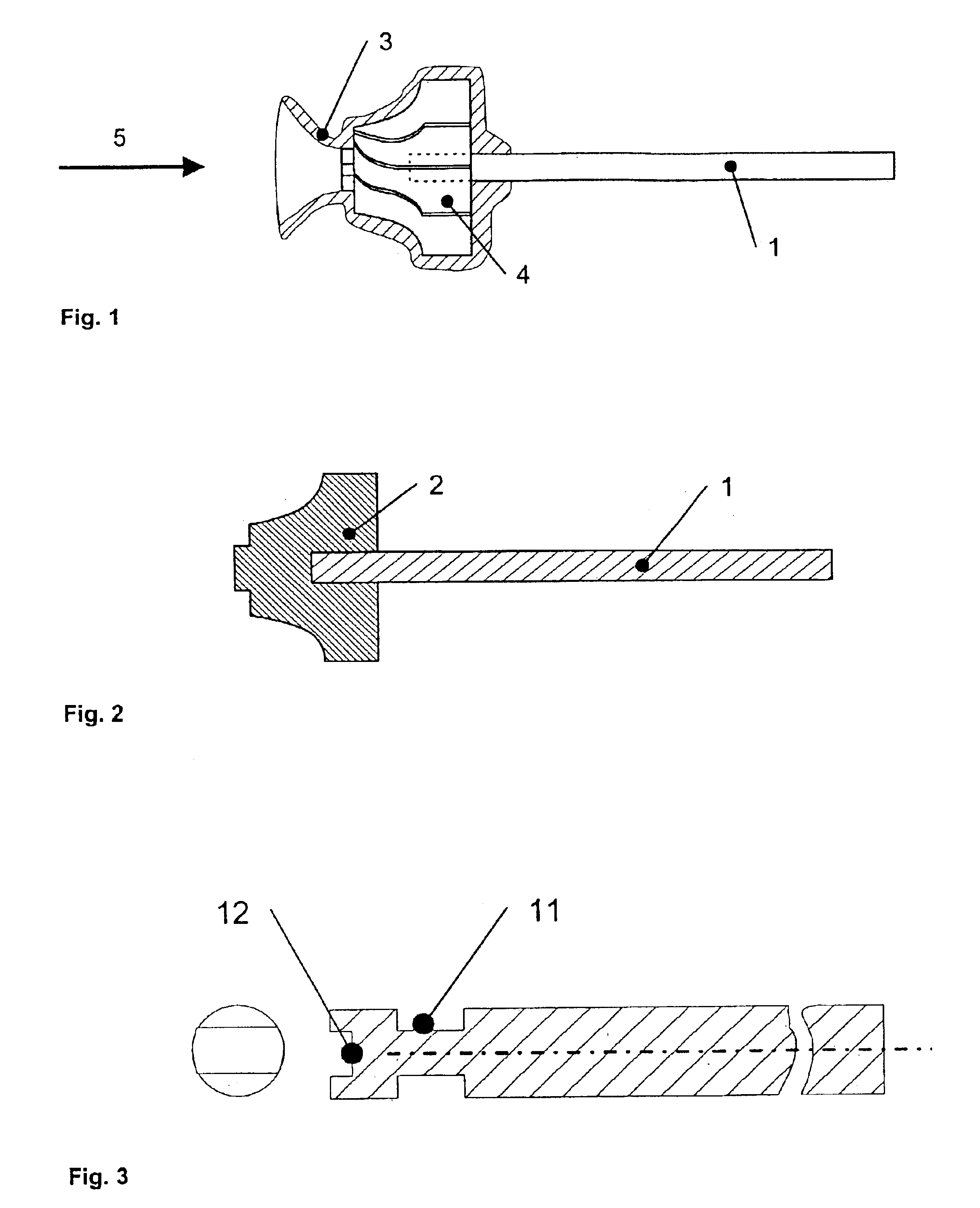Method for manufacturing a turbine wheel rotor
a technology of turbine wheels and rotors, which is applied in the direction of machines/engines, liquid fuel engines, forging/pressing/hammering apparatuses, etc., can solve the problems of high cost and disadvantage of individual parts having to ensure the connection of multi-part turbine rotors, and achieve economic efficiency.
- Summary
- Abstract
- Description
- Claims
- Application Information
AI Technical Summary
Benefits of technology
Problems solved by technology
Method used
Image
Examples
Embodiment Construction
[0034]The ceramic shell mold with sprue 3, which is shown in FIG. 1, is used as a negative mold with integrated shaft 1 to manufacture the turbine wheel rotor by precision casting. For this purpose, initially, a wax model of the wheel is made using wax injection processes. Subsequently, the ceramic shell mold is built up in several dipping cycles in slurry baths and corresponding sanding operations. The wax is melted out and the shell mold is fired. The present invention proposes to insert the shaft into the mold for injection-molding the wax models and, in this manner, to injection-mold the wax model around the shaft. Also carried out are the conventional dipping and sanding operations, in which, however, not only the wax model, but also a part of or the whole shaft is surrounded by a ceramic shell mold. After melting out the wax, the shaft extends into turbine wheel cavity 4 for the turbine wheel.
[0035]The temperature control of shell mold 3 and of shaft 1 located therein is to be...
PUM
| Property | Measurement | Unit |
|---|---|---|
| filling pressure | aaaaa | aaaaa |
| temperature | aaaaa | aaaaa |
| mechanical loads | aaaaa | aaaaa |
Abstract
Description
Claims
Application Information
 Login to View More
Login to View More - R&D
- Intellectual Property
- Life Sciences
- Materials
- Tech Scout
- Unparalleled Data Quality
- Higher Quality Content
- 60% Fewer Hallucinations
Browse by: Latest US Patents, China's latest patents, Technical Efficacy Thesaurus, Application Domain, Technology Topic, Popular Technical Reports.
© 2025 PatSnap. All rights reserved.Legal|Privacy policy|Modern Slavery Act Transparency Statement|Sitemap|About US| Contact US: help@patsnap.com


